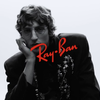"...monopolists, imperialists..."
According to a transcript of her speech, the chairman stated that "scarcely have the war drums died down...while peace-loving countries are busily planning, working, and rebuilding their social order, there are those who are plotting further exploitation and oppression. Foremost among them are the banks and trusts--the high financiers, monopolists, imperialists of America...Through the Marshall Plan they dump their produce on the needy peoples of the world...through the guise of being champions of world democracy they dictate the political policies of the participating countries." She went on to cite the example of the Soviet Union, the "New People's Democracies," as spurring the masses onward to a goal--the "end of injustice."
One of the Harvard delegates who was present at the Festival was Robert L. Warshaw '46 1L. Warshaw had first heard about the Festival last spring when he had applied for a job as an NSA discussion leader aboard the S. S. VOLENDAM. He had put in a year of graduate work in the Social Relations Dept., had been a part-time research assistant at the Russian Research center, and was interested in Eastern European problems. "I joined the delegation to see what was going on," says Warshaw.
Warshaw was as much of an impartial observer as the Festival Committee rules allowed. He took notes of meetings and speeches, photographed exhibits, gathered material released by various delegations. On the VOLENDAM'S return trip, as a member of the N.S.A. orientation staff, he led a three-day series of discussions about the Festival which packed the pitching Holland-American liner's dining room with more than 600 students. After the discussions were over, one of the delegation's leaders said that "I may disagree with Warshaw, but he is honest as hell."
According to Warshaw the U. S.'s opening speech at the Festival typifies what he calls the "negative approach" of the majority of the U. S. delegation. "Even though most of the Festival was supposed to be non-political, the people who were there from America were not representative of U. S. youth. Neither were the things they had to say."
Warshaw points to the American "cultural presentation" as an example. Most of the youth delegations turned out programs ranging from tumbling to ballet; these various exhibitions ran every night. Some were on what Warshaw calls a "professional level," the Soviet delegation putting on a show complete with soloists from Moscow's Bolshoi theater. The Mongolian Republic brought dances, acrobatics, and a collection of stringed instruments.
Political Stage-Show
The U. S. group program was slightly different. The delegates staged folk-songs, dances, and some original choral work in a pageant that represented the history of America. Their offering was popular; the delegates noted before they left that people were humming folk-songs from the show all over Budapest. "To help explain the thing," says one of the returning delegates, "we got up a program."
Warshaw has a copy of that program. It was mimeographed in two languages and presented to everyone who saw the American presentation: more than 2000 people.
The program's foreword states that "we have turned ourselves into performers today ... to show that our people basically have the same goals as you...we are here to tell you this, though loud and powerful voices which have been raised in our country may have caused you to think otherwise." It continues with a description of America repaying its cultural debt to the rest of the world with "arms and economic plans that cripple your industries"; the foreword conands of translations of the original text have cluded that "like you, we love fun, our people, and our land."
Thousands Saw Exhibit
Other U. S. publicity efforts gave a similar picture. The delegation's exhibit, according to Warshaw, was visited by "some thousands" of people; he and his photographs describe it in detail. It included:
1.) Two large wall panels, one showing a map of the U. S., the other Russia. The U. S. map was adorned with dollar-signed arrows reaching out in various directions. The Soviet map was surrounded with pictures of various weapons, indicating that U. S. money was being used to build up an armed ring around the U. S. S. R.
2.) Smaller displays, stating, among other things, that U. S. business profits were evidence of the Cold War" paying off," that American unemployment was climbing as wages fell, that only one half of one percent of young U. S. farmers own their won farms.
Following the Festival, the exhibit started a two-months tour of Hungary. After the Budapest showing, considering preeure from inside the U. S. delegation toned it down and emphasized other than "negative aspects," but thousbeen circulated.
Read more in News
Skating Rinks Completed.












